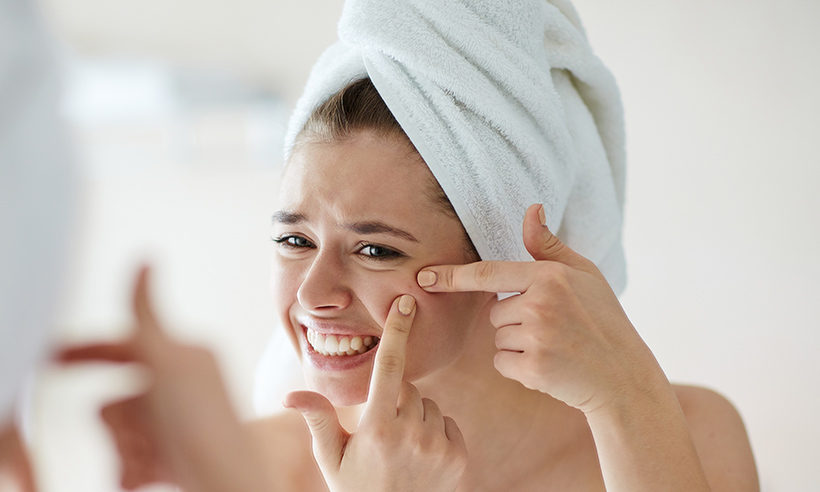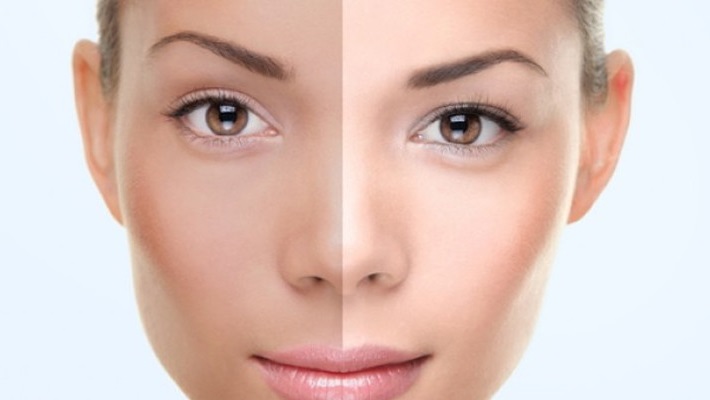Pimples come in different types, and so does the treatment. Here’s how to identify them correctly and treat them
Acne vulgaris is the most common skin condition in the world, a concern for pubescents as well as adults. And hormonal change is just one of the several causes
What we usually blindly classify as pimples, breakouts or acne erupts, most commonly, on the face, chest, shoulders, back and upper arms. The causes vary, so do the classifications—and the solutions. One thing is common: You shouldn’t try to pop or squeeze it. And you should always check your hormone levels.
Acne is broadly classified in two categories, depending on the type and severity. “The type of acne is broadly classified into two categories—non-inflammatory acne or comedones (which is the first stage in the spectrum of acne) and inflammatory. The second category of acne is based on the number and type of acne that appears on the skin. Mild acne is lower than 30 lesions, including blackheads, whiteheads and bumps. Moderate acne is about 30-100 lesions and severe acne is uncontrolled and inflamed cysts,” says Rinky Kapoor, cosmetic dermatologist and dermato-surgeon, The Esthetic Clinics, Mumbai.
Papules, pustules, nodules and cysts, considered the later of acne, are classified as inflammatory acne. “Every stage of acne requires a different approach to tackle the predominant factor—be it clogging of the pores, inflammation or bacterial infection,” says Madhulika Mhatre, consultant dermatology, Wockhardt Hospital. Inflammatory acne is often red, swollen and can be painful. The pores become clogged owing to bacterial infection under the skin; combined with dead skin cells and sebum, this leads to painful acne that does not go away on its own.
Here’s all you need to know about each kind of eruption and how you can treat it.
Blackheads and whiteheads
This non-inflammatory acne does not cause swelling, says Dr Mhatre, and is characterized by open and closed comedones (clogged pores). “Whiteheads are the result of clogged pores, caused by sebum (oil produced by the skin’s sebaceous glands) and dead skin cells. When the clogging increases, it opens the pore even further and exposes it to sunlight, which causes the material inside to get oxidized and appear black. This results in the black dots that are seen on your skin’s surface as blackheads,” says Dr Mhatre.
This stage typically needs mild treatment, which may include face washes and topical creams to reduce the oiliness and pore blockage, she adds. Look for contents such as salicylic acid, glycolic acid, benzoyl peroxide and adapalene in your products which help control oiliness and remove the blockage.
This can also be combined with manual blackhead extraction, which should only be done by a professional to avoid scarring. Be mindful that only blackheads (and not whiteheads) should be extracted, and that by a qualified dermatologist. Try not use blackhead strips, for the adhesive damages the skin. Regular toning and scrubbing can help you both avoid and treat this stage.
Whiteheads appear as a white bump under the skin and the skin appears to be tight, with wrinkles around the whitehead. “Unlike blackheads, never ever pop or try to extract a whitehead. Instead, regularly clean your face, and use salicylic acid and retinoid preparations. Benzoyl peroxide and sulphur preparations also help in treatment. It takes about six-eight weeks to treat both,” says Dr Kapoor. Stay away from comedogenic products (which block pores and cause acne), wash your face thrice daily with a medicated face wash, and follow a low-oil, low-sugar diet.
Papules
“These are red bumps which appear if the comedones are not treated in time. Papules develop when a hair follicle’s wall is ruptured. The rupture causes inflammation around the comedones and results in a red bump (pimple). This stage needs inflammation control,” says Dr Mhatre. These red or pink bumps on the skin do not have pus and they are hard and very tender to touch. Oral medications can help reduce inflammation; chemical peels reduce the papules faster, for they ensure mild exfoliation and reduce the inflammation. “Papules are the severe big brothers of whiteheads and cause mild to severe acne. OTC (over the counter) acne products that contain benzoyl peroxide help contain the bacterial activity. Depending on the severity, your dermatologist might recommend the use of antibiotics and birth control pills,” says Dr Kapoor.
Pustules
Pustule, an infected papule, is known as the classic pimple. These pimples have a white-coloured head that contains white or yellow pus, dead skin cells and excess oil. Inflammation coupled with a rupture in the follicle leads to an increase in bacteria, leading to pus formation. They appear in clusters on the chest, face and back and are painful to touch. “This stage occurs mainly due to an increase in bacteria on the face and will hence require oral anti-acne antibiotics such as Azithromycin or doxycycline. Please take care not to pop the pustules as this may cause pigmentation and scarring. Cleanse your face as prescribed,” says Dr Mhatre. Also, switch to a skin-suitable moisturizer to control the sebum production.
Nodules
Nodules are large, inflamed, red and very painful bumps which occur when inflammation and infection extend deeper into the skin and and the dead skin cells and debris spread the inflammation to the nearby follicles. They are very painful to touch, buried deep under the skin, and contain pus. “Over the skin treatments don’t work with nodules, and a dermatologist will suggest prescription drugs to treat the inflamed lesions. Medications include isotretinoin, benzoyl peroxide and others. In the case of severe acne, professional treatments such as lasers and chemical peels are used to remove the outer layers of skin and treat the nodules faster,” says Dr Kapoor.
Since this is deeper acne, it needs longer treatment. Along with salicylic acid face washes to control excess oil production, oral retinoids are a must to prevent scarring says Dr Mhatre.
Cysts
Acne cysts are the most severe and painful forms of acne. “They are soft (filled with pus and blood), large and fluid-filled bumps beneath your skin’s surface. Acne cysts are formed in the same way as acne nodules, but (are) a more severe form. Cysts do not have much of an inflammatory component. However, they cause immense distress to the patient and hence the need to treat cysts is necessary,” says Dr Mhatre.
In addition to the usual anti-acne treatments mentioned earlier, cysts need to be reduced with local injections administered by a dermatologist. “Oral medications like isotretinoin and spironolactone help control acne in women. Dermatologists also use steroids (injections) for tough cysts. In extreme cases, they might need to be surgically removed,” says Dr Kapoor.
Article Source – https://lifestyle.livemint.com/fashion/beauty/pop-goes-the-pimple-111601877105504.html










